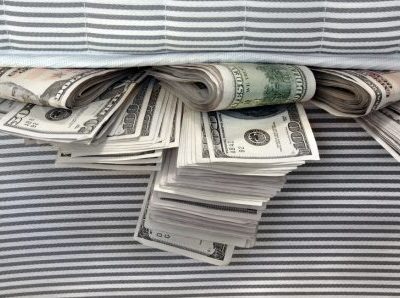How to Jump Start the Economy? Regulate
Smart Regulation Can Overcome The “Paradox of Thrift”

Once we begin to dig ourselves out from the COVID-19 pandemic, we will need to think seriously about how the rebuild the economy. And that should scare environmentalists. Expect a whole series of pushes from the usual suspects about we “can’t afford” environmental protection when the nation is in depression.
That is precisely wrong.
Suppose that we get to the point when COVID-19 is no longer a significant danger: we have post-infection treatments, or a vaccine, or effective methods of contact tracing. But what will jump start the economy? Business will be frightened to invest: where will consumers put their money? Consumers will be afraid to spend: maybe we need to save because who knows what will happen – a phenomenon commonly called “putting money under the mattress.” The Fed can’t cut interest rates any more because they are already zero, so that method of increasing investment is out, a situation sometimes referred to as a “liquidity trap.”

The result will be a frozen economy without the demand to spur investment and growth, which Nobel Laureate Paul Samuelson famously termed the “paradox of thrift.” What might be good for an individual has awful collective consequences.
What can save us? Regulation. And lots of it.
Think of it this way. Regulation spurs demand. If the government tells manufacturers to install pollution control equipment, or orders cleanups of natural resources, that is effectively ordering an increase in demand. And in the case of every sector waiting for every other sector to move, regulation essentially orders one sector to start.
This situation isn’t always the case, of course. There are always tradeoffs, although given the current focus on cost-benefit analysis for regulation, the standard “economy v. environment” cliché is just that. Given the externalities involved in the absence of regulation, it is often more efficient to regulate even when we are out of an economic slump.
But it seems to me that from a macroeconomic perspective, in a depressed economy we should welcome more regulations – at least those of a sort that spurs demand, as many do. Assume that the next time you hear someone trot out the old anti-regulation cliché, they are either ignorant or arguing in bad faith.
Reader Comments
One Reply to “How to Jump Start the Economy? Regulate”
Comments are closed.






I agree, up to a point.
It depends though what regulations are put in. I wouldn’t have said this 20 years ago, but … I am not sure I trust the Democrats (in California at least) not to bungle the job. And I couldn’t be much sorrier to say it, as a lifelong Dem.
Otoh, as just a regular schmoe who wants to do right by the planet and more or less can’t afford the big ticket stuff – electric car, solar panels (I already do the easy stuff like eat less meat, launder in cold water, drive less, etc.) – I would just love to see those items made more accessible.
And the issue isn’t just a PACE loan – it’s, how do I find a roof inspector I can trust? How do I navigate the local power company’s FIT webpage? It’s word salad in there, to people like me. And could they change it tomorrow? Will I somehow end up … powerless? (Ha.) My mechanic tells me, don’t buy a used electric car.
And my trust issues with contractors certainly extend to the legislature. At this point I’d rather have a rev-neutral carbon tax and old-fashioned income redistribution. Otoh, I do tend to be a pessimist.
Again though, I generally agree with what you’ve said … and I suppose even the dumbest regulation is still better than invading Iraq. It’s a low bar, really.